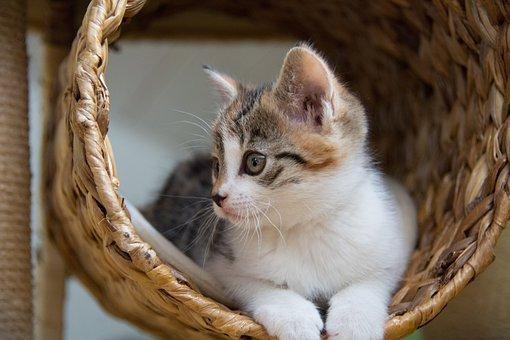Almost all pet owners have questioned the thoughts of their animal companions. Animals have their own means of communication even though they cannot speak to us as humans can. Your pet’s body position might reveal a lot about their feelings.
If you know what to look for in a cat’s body language, it may be quite expressive. The way their tail twitches and the location of their ears are both ways they communicate. Find out more about interpreting the body language of cats.
“Dogs come when they’re called; cats take a message and get back to you later”
– Mary Bly
Happy and Relaxed
When your cat is content and at ease, it may appear to be dozing off or chilling out. They won’t turn and look around since their muscles are relaxed and they won’t. If a cat appears at ease and pleased, it might enjoy being pet or cuddled.
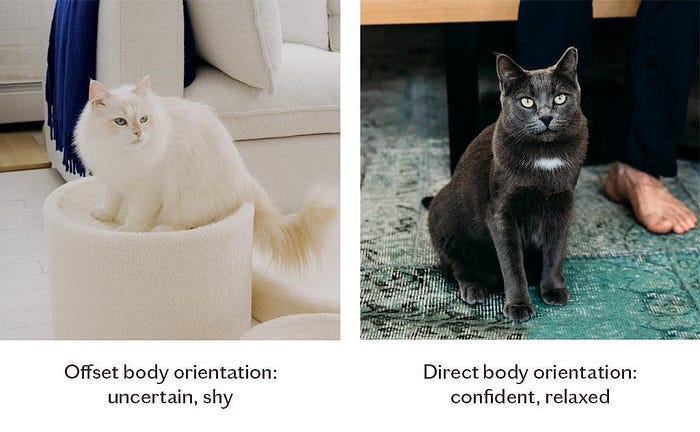
“In a cat’s eye, all things belong to cats”
- Ears. The ears of a calm cat will be positioned naturally. They won’t be angled back or flattened to the head. Even while their ears may twitch in reaction to stimuli, they aren’t continually turning.
- Eyes. The size of your cat’s pupils will be normal when they are at ease. They may appear to be about to nod asleep if you notice them letting their eyes droop halfway. They won’t appear attentive or focused.
- Body. If your cat is lying down, it can be tilted so that its tummy is visible since they are on its side. This demonstrates that they are at ease. The cat will have a straight back and an elevated head if it is sitting erect.
- Tail. A contented cat will let its tail spread out and lie flat. The fur will be flat against the tail, which will be quite still.
Playful
Your cat will get quite animated when it wants to play. They can begin following you around the house, seemingly imploring you to participate in the game. They might begin interacting with a beloved toy.
“An ordinary kitten will ask more questions than any five-year-old”
– Carl Van Vechten

- Ears. Cats that are playful stand up their ears. You may notice that the ears are pointing forward and appear very alert.
- Eyes. While playing, your cat will pay close attention to you or a toy. Their eyes could develop a wild expression, and their pupils will enlarge.
- Body. Cats enjoy playing games of stalking. The cat may appear to be ready to pounce while crouched with their hind end up. Another indication that your cat is having fun is when it pounces.
- Tail. Some felines hold their tails down as they prepare to pounce. They might raise their tail and wag it around. A young cat or kitten may occasionally even chase its own tail.
Frightened or Worried
The back and tail of a worried cat can begin to resemble those of a Halloween cat. Your cat could discover a hiding spot and decide not to come out. They might hiss or flash their teeth. The following warning signals of fear in your cat are also possible.

- Ears. Your cat may quickly swivel its ears back and forth to listen to sounds around it. They could lay flat against their head or bring their ears down so they point sideways.
- Eyes. A cat that is afraid may appear exceedingly vigilant. Their pupils will be dilated and their eyes will be open.
- Body. Your cat’s fur may stand on end and they may arch their back. They can assume a crouching attitude as if they were preparing to flee. As you can see, they’ll be tight and poised for a fight-or-flight reaction.
- Tail. A cat under fear may rigidly hold up its tail. To prevent being caught or bit, they may coil their tail around their body.
Other Bodily Activities
Cats can also communicate with you in various ways, such as:
- Rubbing. Cats have a habit of rubbing up on things, including people. It conveys a message to other cats while also serving as a gesture of affection. One method of dispersing their scent to mark their area is by doing this.
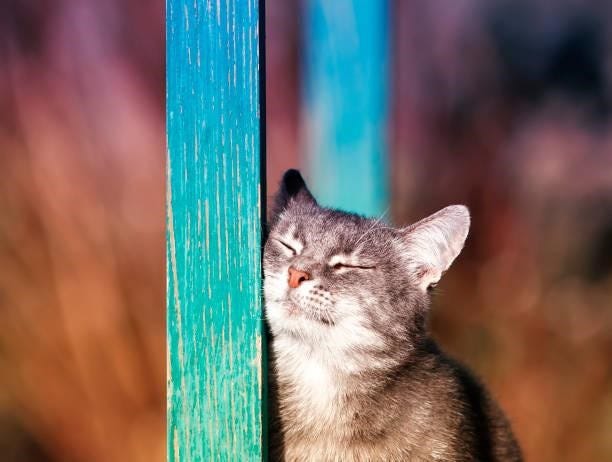
- Kneading. Some cats may wiggle their paws while perched on your lap or a pillow. We call this kneading. It’s infantile conduct that hasn’t changed. Kneading on their mothers to receive milk makes kittens feel comforted.
“A cat will be your friend, but never your slave”
– Theophile Gautier
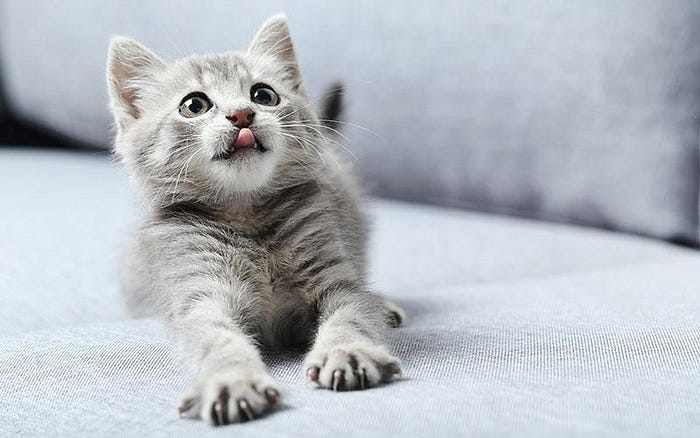
- Vocalizing. Cats are not a meowing species. All they do is meow to attract people’s attention. If your cat is in need of food or attention, it may meow.
- Purring: A cat’s purring indicates calm and satisfaction. It could be an indication of disease or pain if you hear your cat yowling or making strange noises.
- Illness: In cats, a shift in body language is frequently the first indication of disease. You might find your cat curled up with their head and ears down. If they are in agony, they may lie to prevent the suffering from getting worse. Their ears will drop to the sides of their head, and their eyes may appear dull or glassy.
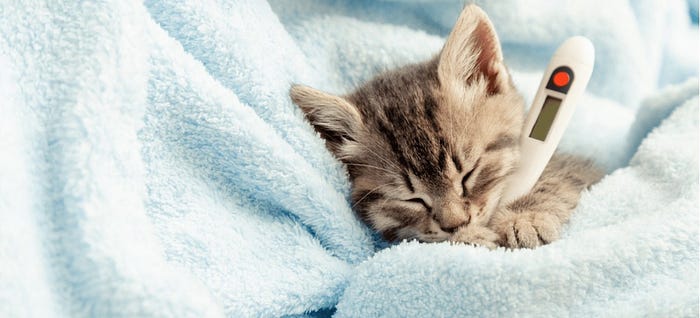
Once you start paying attention to your cat, it should be simple to determine how they are feeling from their body language.
